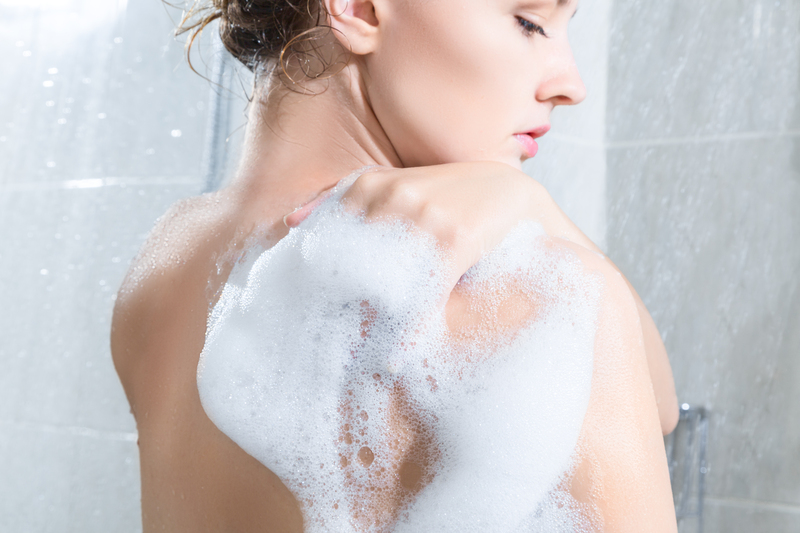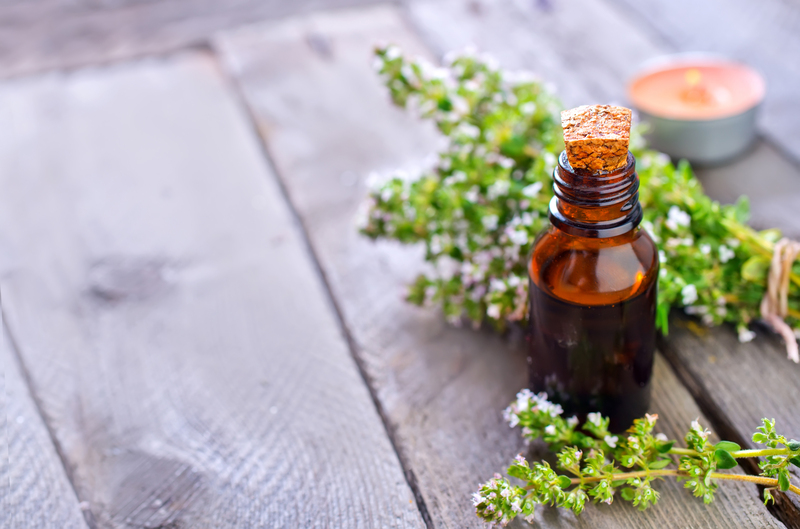Effortlessly Clean Stubborn Stovetop Burnt-on Residue
Posted on 15/08/2025
Effortlessly Clean Stubborn Stovetop Burnt-on Residue: The Ultimate Guide
A sparkling clean stovetop not only looks fantastic but also improves your kitchen hygiene and cooking experience. However, dealing with stubborn burnt-on residue can often be a nightmare. Many homeowners dread removing those tough, baked-on spills and stains that seem impossible to budge. But don't worry! With the right methods and a little know-how, you can effortlessly clean stubborn stovetop burnt-on residue and restore your cooktop to its former glory.

Understanding Stovetop Burnt-On Residue
Burnt-on residue occurs when food or liquids boil over and remain uncleaned during cooking. Over time, heat and repeated exposure cause these spills to solidify and bond with your stovetop surface, resulting in a hard, sticky, or crusty layer that's tricky to remove. This can happen on gas, electric, induction, or glass-top stoves.
Why Is Burnt-On Residue So Difficult to Remove?
- High Temperatures: Continuous high heat bakes the stains onto the surface.
- Surface Types: Glass and ceramic tops are sensitive and prone to scratching, limiting your cleaning options.
- Neglect: Delaying cleanup allows stains to cure deeply into the stovetop.
Persistent residue isn't just unsightly; it can interfere with burner efficiency, release unpleasant odors, and even contribute to sticking and burning of future meals. That's why regular maintenance and correct cleaning techniques are key.
Preparation: What You'll Need
Before you start, make sure you have the right tools and products. Here's what you'll need to clean stove top burnt-on residue effectively:
- Baking soda
- White vinegar
- Dish soap
- Hot water
- Microfiber cloths or sponges
- Plastic scraper (avoid metal to prevent scratching)
- Spray bottle
- Soft-bristled brush
- Paper towels
- Optional: Stovetop-specific cleaning product
Safety First
Always ensure that the stovetop is completely cool before starting the cleaning process. If you need to remove burners or grates, unplug or disconnect your stove according to the manufacturer's instructions.
Step-by-Step: Effortlessly Remove Stubborn Burnt-On Stovetop Residue
Follow these tried and tested steps to achieve a spotless stovetop. For best results, use a combination of gentle abrasion, appropriate cleaners, and patience.
1. Initial Surface Cleaning
Begin by removing any loose food debris or crumbs with a dry cloth or paper towel. This prevents scratching the surface later. For electric or gas stoves, gently remove burners, drip pans, or grates and set them aside.
2. Soften the Stubborn Burnt-On Residue
- Mix a solution of hot water and a few drops of dish soap in a bowl.
- Soak a clean cloth in the solution, then wring it out slightly.
- Lay the damp, warm cloth directly on the burnt areas and let it sit for 15-20 minutes. This helps to soften and loosen the hard, burnt residue.
If you're cleaning removable grates or burner caps, soak them in a sink filled with hot, soapy water for at least 30 minutes.
3. Scrape Residue Gently
After soaking, use a plastic scraper or spatula to lift away as much softened residue as possible. Work slowly, holding the scraper at a low angle to avoid scratching the stovetop surface.
- Avoid metal scrapers or steel wool unless recommended by your stovetop manufacturer, as these can cause permanent damage.
Wipe away the loosened gunk with a microfiber cloth.
4. Tackle Residual Stains with Baking Soda and Vinegar
- Sprinkle baking soda generously over the remaining burnt-on residue.
- Fill a spray bottle with equal parts white vinegar and water.
- Spray the vinegar solution over the baking soda. Let it bubble and fizz for several minutes (this chemical reaction helps break down the stubborn grime).
- Gently scrub the area with a soft sponge or cloth. Use circular motions to lift away the residue.
5. Rinse and Dry for a Polished Finish
- Wipe the surface with a clean, damp cloth to remove all baking soda and vinegar residue.
- Buff dry using a microfiber towel for a streak-free shine.
6. Repeat As Needed
For especially stubborn spots, repeat steps 4 and 5. Some burns may require multiple gentle treatments rather than a single vigorous scrubbing session.
Specialized Techniques for Every Type of Stovetop
Different stovetop types require slightly different care. Here's how to enjoy an effortlessly clean stovetop no matter your appliance.
How to Clean Burnt-On Residue from Gas Stovetops
- Remove and soak grates and burner caps in hot, soapy water.
- Use a soft brush or an old toothbrush to scrub crevices and around burners.
- For sparkling grates, create a paste with baking soda and water, apply it to the grates, and let sit for 20 minutes before scrubbing.
How to Remove Burnt-On Stains from Electric Stovetops
- Remove burner coils and drip pans (check your manufacturer's guide first).
- Clean drip pans with baking soda paste and rinse well.
- For burnt-on gunk on electric coils, gently wipe with a damp cloth--never submerge coils in water.
Effortlessly Clean Glass and Ceramic Stovetops
- Always use non-abrasive cleaners and tools to avoid scratching.
- Razor blade scrapers can be used at an angle to carefully lift burnt-on spots, but only if approved by your stove brand.
- Apply specialty glass stovetop cleaner for a streak-free finish.
Effective DIY Stovetop Cleaning Solutions
Don't have commercial cleaners? You can tackle stubborn burnt-on residue on your stovetop using common household items.
- Baking Soda Paste: Mix 3 parts baking soda with 1 part water for a slightly abrasive but non-damaging scrub.
- Lemon Juice: Natural acidity helps lift grime and leaves a fresh scent. Squeeze directly over residue or add to baking soda paste.
- Hydrogen Peroxide: For serious stains, combine with baking soda to create a deeper cleaning scrub.
- White Vinegar: Great for everyday grease removal and as a streak remover.
Top Store-Bought Cleaners for Tough Stovetop Stains
If home remedies aren't enough, try these highly rated, specialized stovetop cleaners for burnt-on residue:
- Weiman Cooktop Cleaner Max - Specially formulated for glass and ceramic.
- Bar Keepers Friend Cooktop Cleaner - Removes tough, baked-on messes safely.
- Affresh Cooktop Cleaning Kit - Includes pads and cleaning solution.
- Cerama Bryte Cooktop Cleaner - Non-abrasive and safe for daily use.
Pro Tips for Preventing Stovetop Burnt-On Residue
The easiest way to maintain a pristine stovetop is to prevent stubborn residue from building up in the first place. Follow these professional tips:
- Wipe up spills immediately: As soon as your stovetop cools, wipe away any splatters or spills.
- Use burner covers: These catch drips and are easier to clean or replace than your stovetop.
- Avoid overfilling pans: This reduces boil-overs and accidental spills.
- Do a quick daily wipe-down: Prevent long-term stains with a quick clean each night.
- Deep clean weekly: A full clean once a week keeps grime at bay and makes occasional heavy-duty cleaning easier.
When to Call a Professional
In rare cases, extremely stubborn burnt-on residue may not respond to even the most determined home cleaning methods. If you're concerned about damaging a high-end stovetop, or if residue is causing functional issues such as uneven heating, you might want to consider calling in an appliance repair or cleaning specialist. They have access to professional-grade products and specialized tools to restore your stovetop without causing harm.

Frequently Asked Questions about Effortlessly Cleaning Burnt-On Stovetop Residue
Can I use steel wool on my stovetop?
No, never use steel wool or abrasive scouring pads on glass, ceramic, or enamel stovetops. They will scratch and dull the surface. Opt for non-abrasive sponges or approved plastic scrapers.
How often should I deep clean my stovetop?
Ideally, give your stovetop a thorough cleaning once a week, and spot-clean after every use. Regular maintenance prevents buildup of burnt-on gunk and keeps cleaning effortless.
Is oven cleaner safe for stovetops?
Most oven cleaners are too harsh for sensitive stovetop surfaces and can cause discoloration or damage. Always use cleaners recommended for your specific stovetop type.
Conclusion: Enjoy a Spotless, Burn-Free Stovetop Every Day
With the right techniques, a little patience, and the best products, you can effortlessly clean stubborn stovetop burnt-on residue and keep your kitchen beautiful. Remember to act quickly after spills, use gentle, effective cleaning solutions, and maintain a regular cleaning routine. Your stovetop will stay sparkling clean, and you'll enjoy a safer, more pleasant cooking environment every day!
Ready to say goodbye to burnt-on messes forever? Bookmark these tips, follow our step-by-step guide, and make dirty stoves a thing of the past!



